▼ World Bank clears Skill India loan [06-27-17]
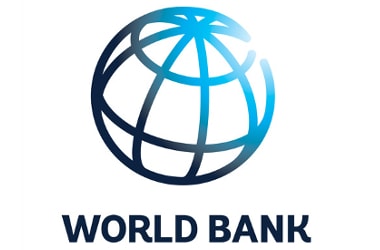 The World Bank has cleared a USD 250-million loan to aid the Skill India mission. The World Bank has cleared a USD 250-million loan to aid the Skill India mission.
The loan amount would be used for making Indian youth more employable through reskilling.
The USD 250 million Skill India Mission Operation (SIMO) is set to increase the market relevance of short-term skill development programmes (3-12 months or up to 600 hours) both at the national and state levels.
It will help the government of India to better equip the young workforce with employable skills.
SIMO will be a six- year programme in support of National Policy for Skill Development and Entrepreneurship (2017-23).
Under the programme, persons in the age group of 15-59 will acquire skill training irrespective of their employment status.
This will benefit 1.2 crore youngsters in the age bracket of 15 and 29 years who are entering the labour market every year.
The programme is expected to benefit approximately 15,000 trainers and 3,000 assessors.
The programme has also a mandate to offer placement and entrepreneurship opportunities to women and increase their exposure to skill training.
Need for Programme: Know More
- As per the official estimates, India is in need of additional 109 million skilled workers to work in 24 key sectors by 2022.
- SIMO will support the government’s vision of increasing women’s participation in the labour force and increase greater off-farm employment.
- Higher skilled labour force will have an improved employment opportunity to raise their earnings.
World Bank: Know More
- World Bank World Bank is one of five institutions created at the Breton Woods Conference in 1944. World Bank is part of the United Nations system, but its governance structure is different.
- World Bank’s headquarter is situated at Washington DC. World Bank provides loans to developing countries for capital programmes.
- World Bank comprises only two institutions viz. the International Bank for Reconstruction and Development (IBRD) and the International Development Association (IDA).
- In contrast, World Bank Group comprises three more viz. International Finance Corporation (IFC), Multilateral Investment Guarantee Agency (MIGA), and International Centre for Settlement of Investment Disputes (ICSID).
|
▼ RBI releases 2nd edition of statistics handbook [06-26-17]
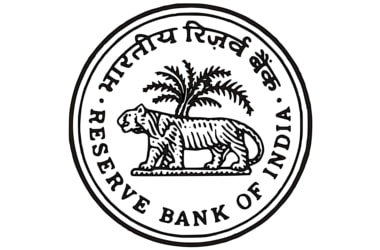 According to ‘Handbook of Statistics on States 2016-17‘, the gross fiscal deficits of all the states have soared to Rs 4,93,360 crore in fiscal 2016 from Rs 18,790 crore in FY1991. According to ‘Handbook of Statistics on States 2016-17‘, the gross fiscal deficits of all the states have soared to Rs 4,93,360 crore in fiscal 2016 from Rs 18,790 crore in FY1991.
This is the second edition of RBI’s statistical publication.
‘Handbook of Statistics on States 2016-17 follows a ‘one-indicator-one table’ approach. It covers all sub-national statistics on socio- demographics, state domestic product, agriculture, industry, infrastructure, banking and other fiscal indicators across the states during the period 1950-51 to 2016-17.
The handbook also provides data on the state-wise availability of power, per capita availability of power, installed capacity of power, and power requirement, the length of national highways, roads and state highways, and railheads.
Uttar Pradesh had a fiscal deficit of INR 3,070 crore in FY91, which has soared to INR 64,320 crore in FY16.
It is projected to improve to INR 49,960 crore in FY17.
Rajasthan had a fiscal deficit of INR 540 crore in FY91, which has soared to INR 67,350 crore in FY16.
Maharashtra has a fiscal deficit of INR 37,950 crore in FY16 which is projected to soar to INR 35,030 crore in FY17.
Gujarat which has seen rapid industrialisation in the period of data analysis has got its fiscal deficit increased from INR 1,800 crore in FY91 to 22,170 crore in FY16 and the deficit is projected to further deteriorate in FY17 to INR 24,610 crore.
Andhra Pradesh has a deficit of INR 17,000 crore in FY16 which is set to increase to INR 20,500 crore in FY17.
Tamil Nadu is also projected to have a higher deficit at INR 40,530 crore in FY17. Karnataka is also estimated to post higher deficit in FY17 at INR 25,660 crore.
Bihar which has a fiscal deficit of INR 28,510 crore in FY16 is slated to improve its finances with the fiscal deficit of INR 16,010 crore in FY17.
Similarly, West Bengal is also slated to improve its fiscal deficit to INR 19,360 crore in FY17 .
However, the gross fiscal deficit is projected to decline to INR 40,530 crore in FY17.
|
▼ Aadhaar mandatory for banking [06-19-17]
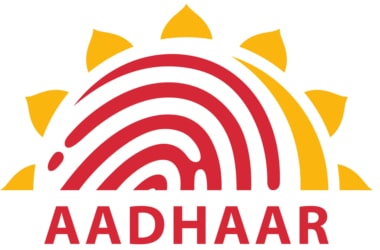 Stepping up its fight against tax evasion, the Centre has made it mandatory to quote the Aadhaar number for opening bank accounts and for transactions exceeding INR 50,000. Stepping up its fight against tax evasion, the Centre has made it mandatory to quote the Aadhaar number for opening bank accounts and for transactions exceeding INR 50,000.
With the amendments to the Prevention of Money Laundering (Maintenance of Records) Rules, 2005 notified earlier this month, banks will have to demand both Aadhaar and the Permanent Account Number (PAN) for verification of identity, starting June 1.
By the Finance Act, 2017, the Government had made it mandatory to seed PAN with Aadhaar and quote it in income-tax returns.
However, the Supreme Court had held that only those individuals who possess an Aadhaar card need to link it with PAN.
The new rules mandate existing bank account-holders to provide their Aadhaar details by December 31, while new applicants will be expected to quote either the 12-digit number or offer proof that they have applied for Aadhaar enrolment.
Small accounts - those with a limit of INR 50,000 - can be opened without Aadhaar, but only at bank branches that are core-banking enabled, or where it is "possible to manually monitor" such accounts.
Banks are expected to ensure that foreign remittances are not credited to such accounts, and that the stipulated limits on monthly and annual transactions and balance are not breached.
According to the new rules, "The small account shall initially remain operational for 12 months, and thereafter for a further period of 12 months if the holder of such an account provides evidence before the banking company of having applied for any of the officially valid documents within 12 months."
The small account will be monitored, and in case of suspicion of money laundering, or financing of terrorism or such other high-risk activities, the identity of the account-holder will be verified by Aadhaar, or proof of having enrolled for it.
It is a step forward in promoting transparency and curbing benami holdings in financial institutions, including banks.
|
▼ RBI: India's CAD narrows [06-19-17]
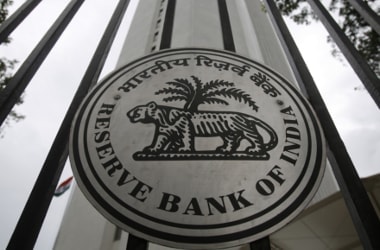 According to Reserve Bank of India (RBI), India’s current account deficit (CAD) narrowed during 2016-17 fiscal owing to a contraction in the country’s trade deficit. According to Reserve Bank of India (RBI), India’s current account deficit (CAD) narrowed during 2016-17 fiscal owing to a contraction in the country’s trade deficit.
The CAD for the last fiscal narrowed down to 0.7% of the GDP from that of 1.1% in 2015-16 due to contraction in the trade deficit.
Country’s trade deficit narrowed down to $112.4 billion in 2016-17 from $130.1 billion in 2015-16.
Further, the net FDI (Foreign Direct Investment) inflows in 2016-17 also got narrowed to $35.6 billion from $36 billion during 2015-16.
Current Account: Know More
- The current account is the net difference between inflows and outflows of foreign currencies.
- Current Account transactions increase or decrease national income.
- It includes all transactions of export and import of goods and services, investment income, and unilateral transfers.
- It consists of two major items (a) merchandise exports (credit to home country) and imports (debit to home country) (b) invisible exports (sale of services) and imports (purchase of services).
- If the sum of all these transactions is negative then it is called as current account deficit.
|
▼ Cabinet approves Financial Resolution and Deposit Insurance Bill 2017 [06-15-17]
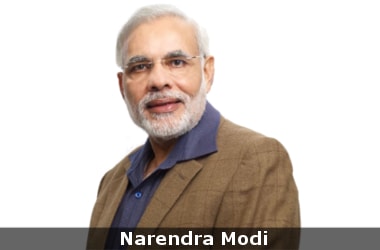 The Union Cabinet chaired by the Prime Minister Shri Narendra Modi has approved the proposal to introduce a Financial Resolution and Deposit Insurance Bill, 2017. The Union Cabinet chaired by the Prime Minister Shri Narendra Modi has approved the proposal to introduce a Financial Resolution and Deposit Insurance Bill, 2017.
The Bill would provide for a comprehensive resolution framework for specified financial sector entities to deal with bankruptcy situation in banks, insurance companies and financial sector entities.
The Financial Resolution and Deposit Insurance, Bill 2017 when enacted, will pave the way for setting up of the Resolution Corporation.
It would lead to repeal or amendment of resolution-related provisions in sectoral Acts as listed in Schedules of the Bill.
It will also result in the repealing of the Deposit Insurance and Credit Guarantee Corporation Act, 1961 to transfer the deposit insurance powers and responsibilities to the Resolution Corporation.
The Resolution Corporation would protect the stability and resilience of the financial system; protecting the consumers of covered obligations up to a reasonable limit; and protecting public funds, to the extent possible.
The Government has recently enacted the Insolvency and Bankruptcy Code, 2016 ("Code") for the insolvency resolution of non- financial entities.
The proposed Bill complements the Code by providing a resolution framework for the financial sector. Once implemented, this Bill together with the Code will provide a comprehensive resolution framework for the economy.
Financial Resolution and Deposit Insurance Bill: Know More
- The Financial Resolution and Deposit Insurance Bill, 2017 seeks to give comfort to the consumers of financial service providers in financial distress.
- It also aims to inculcate discipline among financial service providers in the event of financial crises by limiting the use of public money to bail out distressed entities.
- It would help in maintaining financial stability in the economy by ensuring adequate preventive measures, while at the same time providing the necessary instruments for dealing with an event of crisis.
- The Bill aims to strengthen and streamline the current framework of deposit insurance for the benefit of a large number of retail depositors. Further, this Bill seeks to decrease the time and costs involved in resolving distressed financial entities.
|
▼ IRDAI takes over Sahara India Life Insurance Company [06-15-17]
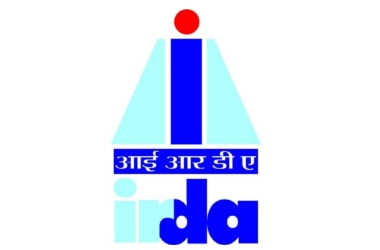 The Insurance Regulatory and Development Authority of India (IRDAI) has announced taking over the management of the Sahara India Life Insurance Company. The Insurance Regulatory and Development Authority of India (IRDAI) has announced taking over the management of the Sahara India Life Insurance Company.
Insurance regulator, IRDAI in an order issued in New Delhi on 12 June 2017 said that Subrata Roy run insurer was “acting in a manner” prejudicial to the interest of subscribers.
IRDAI appointed one of its general managers, RK Sharma, as administrator to manage the affairs of the insurer with “immediate effect”.
IRDAI appointed RK Sharma (GM (F&A-NL)) the administrator of Sahara India Life Insurance Company by exercising the powers granted under section 52 A of the Insurance Act, 1938.
The Administrator shall conduct the management of the business of the insurer as per applicable provisions of the Insurance Act, 1938.
The regulator said it has “reasons” to believe that Sahara India Life Insurance Company “is acting in a manner likely to be prejudicial to the interest of holders of life insurance policies”.
IRDAI further said it will be the endeavour of the administrator to ensure the servicing of the policyholders and managing the affairs of the insurer in a smooth manner as far as feasible.
IRDAI: Know More
- Website: irdai.gov.in
- Founded: 1999
- Sector: Insurance
- Headquarters: Hyderabad
- Agency executive: T.S.Vijayan (Chairman)
- Type: Statutory corporation
|
▼ Forex reserves touch lifetime high in June 2017 [06-12-17]
 According to RBI, India’s foreign exchange (Forex) reserves have increased by $2.404 billion to touch a lifetime high of $381.167 billion in the week that ended on June 2. According to RBI, India’s foreign exchange (Forex) reserves have increased by $2.404 billion to touch a lifetime high of $381.167 billion in the week that ended on June 2.
The increase was due to increase in foreign currency assets (FCAs). Components The components of India’s Foreign Exchange Reserves include: Foreign currency assets (FCAs), Gold, Special Drawing Rights (SDRs) and RBI’s Reserve position with International Monetary Fund (IMF).
Out of all the components, FCAs constitute the largest component of the Forex Reserves.
FCA rose by $2.748 billion to $357.290 billion in the reporting week.
FCA: Know More
- FCAs consist of US dollar and other major non-US global currencies.
- It also comprises of investments in US Treasury bonds, bonds of other selected governments, deposits with foreign central and commercial banks.
- FCAs include with them the effects of appreciation or depreciation of non-US currencies like the euro, pound, and the yen and is expressed in terms of dollars.
- The gold reserves declined by $343.2 million to $20.095 billion in the reporting week.
- SDRs’ value decreased marginally by $0.2 million to $1.472 billion.
- RBI’s reserve position with the IMF declined by $0.4 million to $2.309 billion.
|
▼ Union Government limits FDI approval to 60 days [06-9-17]
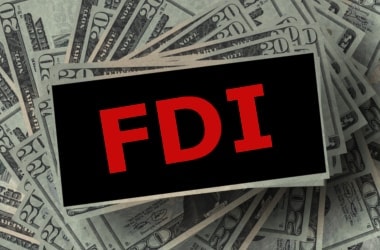 The Union Government on 6 June 2017 said that Ministries will have to decide on FDI proposals within 60 days of the application and any rejection will need concurrence of the Department of Industrial Policy and Promotion (DIPP). The Union Government on 6 June 2017 said that Ministries will have to decide on FDI proposals within 60 days of the application and any rejection will need concurrence of the Department of Industrial Policy and Promotion (DIPP).
Earlier in May 2017, India had scrapped the 25-year old foreign investment advisory body named Foreign Investment Promotion Board (FIPB). It was scrapped with an aim to attract more FDI by providing quick approvals.
In an office memorandum, the Finance Ministry said subsequent to the abolition of FIPB, concerned administrative ministries have been allotted the work of granting approval for foreign investment in the specific sector.
The Industry Ministry, in consultation with the administrative ministry, will come out with a detailed guideline for processing of the FDI proposals and ensure a “consistency of treatment and uniformity of approach”.
The Standard Operating Procedure will involve the process of inter-ministerial consultation for the examination of FDI proposals, wherever necessary.
FDI approval decisions in majority of the sectors have been relegated to concerned ministry and those relating to private security agencies would be decided by the Home Ministry.
While DEA will be responsible for clearing the proposals of financial services or there is a doubt about the regulator.
The memorandum also says that any FDI proposal related to banks will be approved by the Department of Financial Services.
The memorandum says that FDI proposals by NRIs/EoUs requiring approval of the government will be dealt with by the Department of Industrial Policy and Promotion (DIPP).
In this case, the DIPP will continue to be the administrative ministry for this purpose. DIPP will also be responsible for handling the applications seeking import of capital goods or machinery.
Applications of investments from countries of concern will require security clearance as per the FEMA guidelines and FDI policy. These applications will be processed by the Home Ministry. In this case, the Home Ministry will only process those applications that reach them via automatic route but requiring security clearances, cases pertaining to approval route sectors requiring security clearance will be processed by the concerned administrative ministry.
In cases of FDI application where there will be a doubt about the administrative ministry, DIPP will also be responsible for identifying the ministry where application will be processed.
|
▼ India in top 5 consumer markets in Asia - BMI Research [06-8-17]
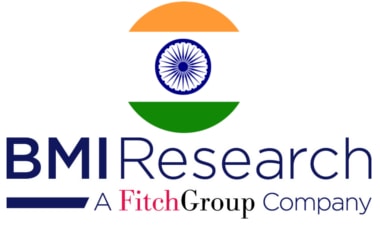 According to BMI Research, a Fitch group company, India is among the top five consumer markets in Asia offering retailers the strongest consumer spending growth of an average of 6.1% over the next five years. According to BMI Research, a Fitch group company, India is among the top five consumer markets in Asia offering retailers the strongest consumer spending growth of an average of 6.1% over the next five years.
The other four countries are China, Sri Lanka, Vietnam and Indonesia. BMI Research was founded in 1984 Business Monitor International and later in 2014 was acquired by Fitch Group.
The firm performs industry and financial market analysis in 24 industries and 200 global markets.
According to the report, the real consumer spending growth in 2017 will be 6.2%. The factors responsible for increase in consumer spending in India include increase in access to consumer credit, lower inflation and favourable regulatory environment for foreign owned retailers.
These factors will continue to enhance India’s consumer sectors in the coming years. India’s thriving e-commerce segment is expected to grow at double-digit rates in the forecast period up to 2021.
The report has found that due to the limitations of activities for overseas retailers, e-commerce has been dominated by local firms like Flipkart and Snapdeal.
In India, bricks-and-mortar retailers have also began to foray into the e-commerce segment supported by the high mobile penetration in the country.
|
▼ India 45th on World Competitiveness Index [06-7-17]
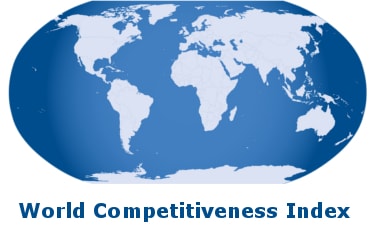 India has been ranked 45th, down four notches from last year, in terms of competitiveness in the annual rankings compiled by IMD which saw Hong Kong topping the list. India has been ranked 45th, down four notches from last year, in terms of competitiveness in the annual rankings compiled by IMD which saw Hong Kong topping the list.
US was “pushed out” of the top three slots while Hong Kong consolidated its dominance of the annual rankings for the second year.
The list is compiled by the International Institute for Management Development’s (IMD) World Competitiveness Centre. Switzerland and Singapore were ranked second and third respectively, with the USA at the fourth spot - its lowest position in five years and down from third last year.
The Netherlands completed the top five, jumping up from eighth last year.
Others in the top 10 list include Ireland at 6th, Denmark 7th, Luxembourg (8th), Sweden (9th) and UAE at 10th.
As India slid, China improved its position by seven places to 18th, thanks to its dedication to international trade. “If you look at China, its improvement of seven places to 18th can be traced to its dedication to international trade. This continues to drive the economy and the improvement in government and business efficiency,”
Professor Arturo Bris, Director of the IMD World Competitiveness Centre said. The bottom of the table, meanwhile, is largely occupied by countries experiencing political and economic upheaval.
Ukraine was ranked 60th, while Brazil was placed at the 61st position and Venezuela at 63rd.
IMD: Know More
- The IMD World Competitiveness Centre is a research group at IMD business school in Switzerland.
- It has been publishing the rankings every year since 1989.
This year’s list comprises 63 countries with Cyprus and Saudi Arabia making their first appearance. Meanwhile, for the first time this year, the IMD World Competitiveness Centre also published a separate report ranking countries’ digital competitiveness. - At the top of the digital ranking is Singapore, followed by Sweden, the USA, Finland and Denmark, while the bottom five are Indonesia, Ukraine, Mongolia, Peru and Venezuela.
|
▼ Habibganj - India’s first station for PPP redevelopment [06-6-17]
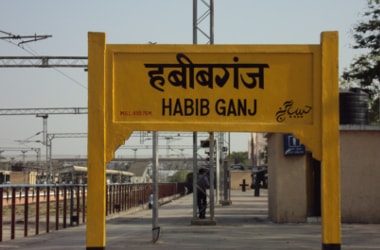 Habibganj railway station in the suburbs of Bhopal will become country’s first railway station to be redeveloped in a public-private partnership (PPP) mode. Habibganj railway station in the suburbs of Bhopal will become country’s first railway station to be redeveloped in a public-private partnership (PPP) mode.
On June 9, station redevelopment work in the railway station will be launched by Railway Minister Suresh Prabhu.
The idea is to develop Habibganj railway station as a world-class transit hub equipped with all amenities.
The operation and maintenance of the railway station has been given to Bhopal-based Bansal Group for a period of eight years.
The group has managed to win the bid in 2016. Bansal Group plans to completely overhaul the station and develop four commercial land parcels to make Habibganj a commercial hub with shops, offices and hotels, all in a span of three years.
The environment-friendly railway station will be powered by solar energy. The station will have facilities for disabled, in addition, to lifts, escalators and travelators, underpasses.
In case of emergency, the station will be redesigned in such a way that the premises can be evacuated in four minutes and passengers can reach designated points of safety in six minutes.
Bansal Group will be responsible for all the facilities at the station like food stalls, retiring rooms, power, platform maintenance, parking etc.
IRSDC will oversee the Habibganj project. IRSDC is formed by railway unit Ircon International Ltd (IRCON) and Rail Land Development Authority (RLDA) to undertake station redevelopment projects.
WB's First PPP Mode Station: Know More
- The idea to set up world-class railway stations was mooted by former railways minister Mamata Banerjee in 2009-10.
- It was only in 2015, the project was revived by the railway minister Suresh Prabhu.
- The Habibganj project is a part of the Indian Railways’ ambitious plan to re-develop 400 A1 and A category railway stations.
- Indian Railways’ ambition to redevelop 400 stations into world-class facilities is completely based upon its idea of land monetization.
- It aims to modernize and upgrade passenger amenities at stations by raising money through commercial development of railway land.
- Avenues such as land monetization, catering and parking will be utilized to boost overall revenue.
|
▼ Uday Kotak heads committee on Corporate Governance [06-5-17]
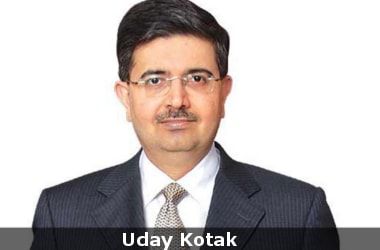 Market Regulator SEBI has formed a Committee on Corporate Governance under the chairmanship of Uday Kotak, the executive vice chairman and managing director of Kotak Mahindra Bank. Market Regulator SEBI has formed a Committee on Corporate Governance under the chairmanship of Uday Kotak, the executive vice chairman and managing director of Kotak Mahindra Bank.
The move is aimed at improving the standards of corporate governance of listed companies.
The panel which is headed by Uday Kotak will also include representatives of Corporate India, stock exchanges, professional bodies, investor groups, chambers of commerce, law firms, academicians and research professionals and SEBI.
The panel has been mandated to submit the report within a period of four months.
The mandate of the committee is to make recommendations on: Ensuring independence in spirit of independent directors and their active participation in functioning of the company.
The steps that are need to be taken for improving safeguards and disclosures pertaining to related party transactions.
To suggest measures for addressing issues faced by investors on voting and participation in general meetings.
The steps required for improving effectiveness of board evaluation practices. Suggest on issues pertaining to disclosure and transparency.
Corporate Governance Norms: Know More
- In April, SEBI unveiled the detailed corporate governance norms for listed companies.
- The new norms which are in alignment with the new Companies Act would be effective from October 1.
- The new norms are aimed at encouraging companies to adopt best practices on corporate governance. SEBI’s new norms provides for stricter disclosures and protection of investor rights including equitable treatment for minority and foreign shareholders.
SEBI: Know More - SEBI is the statutory regulator for the securities market in India established in 1988.
- It was given statutory powers through the SEBI Act, 1992.
- SEBI’s headquarters is in Mumbai, Maharashtra. SEBI’s mandate is to protect the interests of investors in securities, promote the development of securities market and to regulate the securities market.
|
▼ India loses fastest growing economy tag [06-2-17]
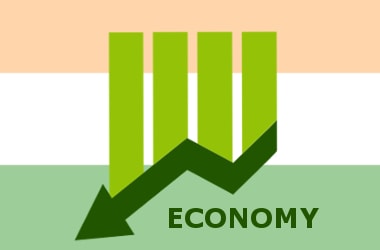 India lost its fastest-growing major economy tag in the January-March period, which was the fourth quarter of the financial year (FY) 2016-17, with the Gross Domestic Product (GDP) growth coming down to 6.1 per cent compared with a provisional 7 per cent in the previous quarter. India lost its fastest-growing major economy tag in the January-March period, which was the fourth quarter of the financial year (FY) 2016-17, with the Gross Domestic Product (GDP) growth coming down to 6.1 per cent compared with a provisional 7 per cent in the previous quarter.
The growth of 6.1 per cent was also lower than China’s growth in the same period which was 6.9 per cent.
The data released by the Ministry of Statistics on 31 May 2017 showed that the GDP grew 7.1 per cent in the FY 2016-17, which was slower than 8 per cent growth registered during FY 2015-16.
The GDP numbers for the FY 2016-17 was based on the new 2011-12 base year, which was adopted in recent past. The changes in the new base year also include Index of Industrial Production (IIP) and Wholesale Price Index (WPI).
India’s economic growth unexpectedly slowed to its lowest in more than two years and reports suggest that it was dragged down by construction, manufacturing and trade services.
Report on contraction in these fields are given below. It contracted 3.7 per cent year-on-year in the March quarter compared with a 3.4 per cent growth in the prior quarter.
It grew 5.3 per cent in the last quarter from a year ago, slower than an annual rise of 8.2 per cent in the December quarter.
The annual growth in these areas slowed to 6.5 per cent in the January-March period from 8.3 per cent a quarter ago.
The second reason for this unexpected slump in GDP growth in March quarter can also be attributed to Prime Minister Narendra Modi’s decision on 8 November 2016, in which he scrapped two high-value banknotes of the country, i.e. INR 1000 and 500 notes.
|